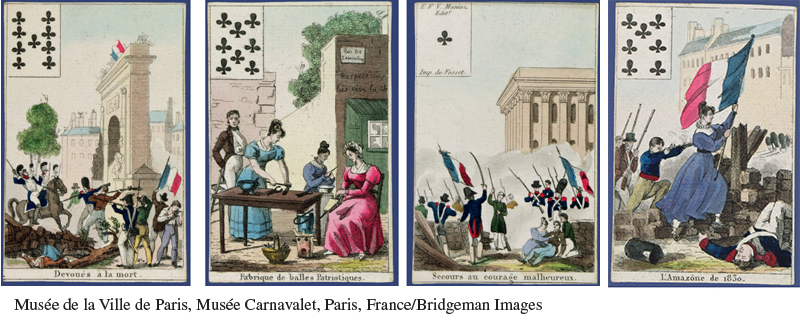A History of Western Society: Printed Page 707
A History of Western Society, Value Edition: Printed Page 677
A History of Western Society, Concise Edition: Printed Page 707
The Revolution of 1830 in France
Like Greece and the British Isles, France experienced dramatic political change in the first half of the nineteenth century, and the French experience especially illustrates the disruptive potential of popular liberal politics. The Constitutional Charter granted by Louis XVIII in the Bourbon restoration of 1814 was a limited liberal constitution (see Chapter 19). The charter protected economic and social gains made by sections of the middle class and the peasantry in the French Revolution, permitted some intellectual and artistic freedom, and created a parliament with upper and lower houses. Immediately after Napoleon’s abortive Hundred Days, the moderate, worldly king refused to bow to the wishes of die-

Louis XVIII’s charter was liberal but hardly democratic. Only about 100,000 of the wealthiest males out of a total population of 30 million had the right to vote for the deputies who, with the king and his ministers, made the laws of the nation. Nonetheless, the “notable people” who did vote came from very different backgrounds. There were wealthy businessmen, war profiteers, successful professionals, ex-
Louis’s conservative successor, Charles X (r. 1824–1830), a true reactionary, wanted to re-
In June 1830 a French force of thirty-
Emboldened by the initial good news from Algeria, Charles repudiated the Constitutional Charter in an attempted coup in July 1830. He censored the press and issued decrees stripping much of the wealthy middle class of its voting rights. The immediate reaction, encouraged by liberal lawyers, journalists, and middle-
Events in Paris reverberated across Europe. In the Netherlands, Belgian Catholics revolted against the Dutch king and established the independent kingdom of Belgium. In Switzerland, regional liberal assemblies forced cantonal governments to amend their constitutions, leading to two decades of political conflict. And in partitioned Poland, an armed nationalist rebellion against the tsarist government was crushed by the Russian Imperial Army.
Despite the abdication of Charles X, in France the political situation remained fundamentally unchanged. The new king, Louis Philippe (r. 1830–1848), accepted the Constitutional Charter of 1814 and adopted the red, white, and blue flag of the French Revolution. Beyond these symbolic actions, however, popular demands for more thorough reform went unanswered. The upper middle class had effected a change in dynasty that maintained the status quo and the narrowly liberal institutions of 1815. Republicans, democrats, social reformers, and the poor of Paris were bitterly disappointed. They had made a revolution, but it seemed for naught.